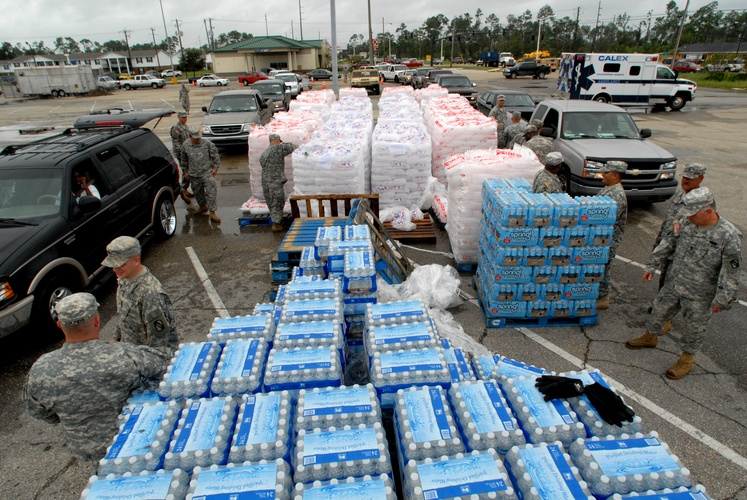What are the Seven Stages of Government Procurement
Every year, the U.S. federal government commits to and executes contracts worth hundreds of billions of dollars. Some estimates put it around four or five million contracts annually, but it is really hard to nail down an exact number. Every agency of every department of the federal government contracts extensively for everything from bathroom soap to jet engine upgrades, and every single thing in between.
But how does this work? Through a process known as government procurement.
In most circumstances, there are seven essential steps to the government procurement process that all of these contracts run through to procure the assets in need. Here’s our comprehensive breakdown of the seven-step process.

1. Need Identification
The very first step in the process involves identifying needs for the procurement process.
No matter what the project is, it needs to be clearly laid out and spelled out. This is the very early stages of any project. When an Army airfield has a runway that is beyond its useful life, the need is clearly identified. This is not the phase where any sort of solicitation actions are taken.
Rather, it is the time when the allowable limits are documented, deficiencies are noted, and the need is formally recognized within the organization.
One important thing to understand about need identification is that it can come from a few sources. In the previous example, that would be a regulatory mandate; i.e., it no longer meets established regulatory standards. But needs also arise from internal sources, or from external mandates like legislative mandates, public requests, or technological advancements.
2. Pre-Solicitation
This second stage in the government procurement process follows the need identification stage. This phase involves planning and preparation before the official solicitation is prepared and released for fulfillment.
The goal is ensuring that procurement is done in a well-defined, transparent way that is wholly aligned with the agency’s goals and the legal requirements of the procurement in question.
Here is a basic rundown of the second stage of the process:
Requirement Refinement
The general needs that are identified in the first stage are drilled down a little deeper in this second stage. Specifications are compiled into a statement of work (SOW) with the exact technical requirements, performance criteria, and all other relevant details that vendors must meet.
Market Research
Market research is a critical part of the process. This is important to “cast a wide enough net” of vendors.
Budget and Funding Confirmation
This is one of the most important steps: making sure that the budget is available and approved for the project. Also, detailed cost estimates are developed based on the refined requirements and market research. These estimates guide the budget and help in evaluating vendor proposals later in the process.
3. Solicitation Preparation
The third step in government procurement is the process of finalizing and issuing the formal solicitation documents that are sent to potential vendors. Here are the core steps:
- Request for Proposals (RFP), Request for Quotations (RFQ)some text
- RFP: when the government needs a detailed proposal that includes technical solutions, pricing, etc.RFPs are most common for complex procurements.
- RFQ: When the agency or the entity needs a defined set of products or services, typically for less complex purchases.
- IFB: when prices are the primary consideration and driver in the process, and specs are clearly defined, an IFB is used.

The solicitation paperwork, which is extensive, usually entails the following paperwork:
- Statement of Work (SOW): A detailed description of the work to be performed or the products/services to be provided.
- Technical Specifications: Specific requirements that the vendor’s product or service must meet.
- Terms and Conditions: Legal and contractual obligations, including payment terms, delivery schedules, and compliance requirements.
- Evaluation Criteria: The criteria that will be used to evaluate bids or proposals, including the weight given to price, technical capability, past performance, and other factors.
- Instructions to Bidders/Offerors: Guidance on how to prepare and submit a bid or proposal, including deadlines, format requirements, and submission procedures.
After these are established, the RFP/RFQ/IFB is up for internal review and approval, establishing a timeline, and advertising the solicitation.
4. Solicitation Process
Step four in the process is the process of issuing the solicitation to prospective vendors through SAM.gov (System for Award Management), GSA eBuy. You should consider FedConnect as a complimentary service to these websites (it is not a federal service or website).
The goal of the fourth step in the process is to perfect and post the solicitation. The government needs to get as many qualified responses for qualified vendors to be competitive, but not so many that it becomes impossible to settle on a vendor.
5. Evaluation Process
Every step of the process is highly important, but this is really the crux of the whole matter. The evaluation process is the culmination of the entire research and solicitation process.
Submitted bids and proposals are carefully reviewed to see which vendor offers the best overall value to the mission at hand. This process begins when an evaluation team is formed, made up of subject matter experts. This team, sometimes called a Tiger Team, uses the predefined evaluation criteria outlined in the solicitation documents to assess each submission. These criteria often include factors such as technical capability, past performance, compliance with specifications, and cost.
6. Award Process
The second to last stage is awarding the bid. This is a formal process, and the contract is a legal document. Once the award has been approved, it is time to process it and notify the winner. Unsuccessful vendors are also notified.
Now, it isn’t quite done at this point. They may still yet need to refine the scope of work, finalize the pricing, and set the schedule. Once both parties (or more than two, depending on the complexity of the process) agree to the terms, the contract is signed, and the vendor may commence the project.
7. Contract Process
This brings us to the final stage of the government procurement process.
Whatever the vendor was hired to do, they will now do. This may be as simple as replacing all of the light assemblies in a building with LED lights, or as complex as repaving a runway and taxiways.
At the end of the contract, the stakeholders will ensure that the job was completed successfully. But more importantly, they comb over it to make sure that the contract is completed exactly as the RFP said it would. The vendor is legally obligated to do so, so it must be done exactly as specified.

How Greenwood Aerospace Approaches Government Procurement
For over forty years, Greenwood Aerospace has been a trusted leader in government procurement. We specialize in delivering fast, efficient support to customers of all sizes, handling everything from small components to large fixed-wing aircraft. Our clients include all branches of the U.S. Military, NOAA, the Department of the Interior, the Department of Energy, and the top defense contractors in the country. With decades of experience, we ensure rapid, dependable service to keep your program running smoothly.
We have forged invaluable connections in the industry, vetting out the best in the business.
Final Thoughts
Greenwood Aerospace is the trusted partner you’ve been looking for in the government procurement industry. We know the best in the business and have been working with them for over four decades.
Trust us with your toughest projects and we will give you the white glove treatment.
For more information you can get in touch with us here or by emailing sales@governmentprocurement.com.


.svg)


.png)


